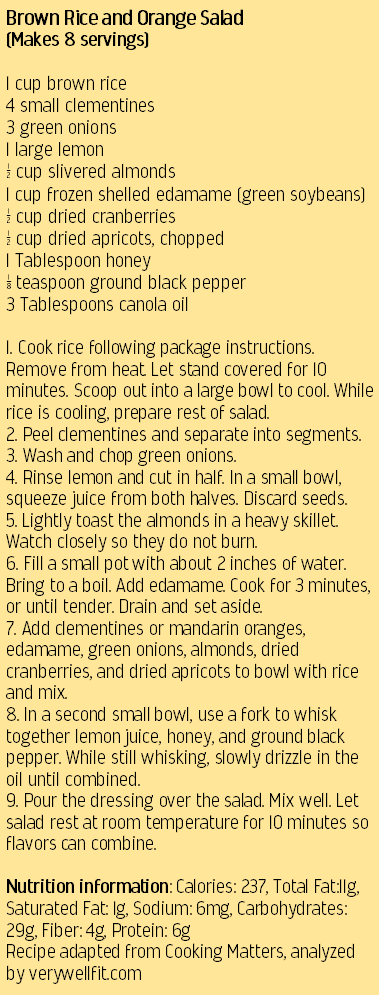|
|
by Denise Sullivan, Nutrition & Health Education Specialist, University of Missouri Extension As my husband and I completed the end-of-season garden clean-up, I found myself a little sad that our little garden plot had come to an end. Granted, I still have plenty of spaghetti squash in the basement and a pantry full of pickles and salsa that are the evidence of our efforts, but I will miss the goodness of a just-picked tomato or cucumber.
As I found myself pondering the fresh produce options over the coming months, I decided to ask my Facebook friends for their ‘go-to’ fruit and vegetable choices during the winter. Some of the responses were humorous, others were inspiring, but I saw a theme when it came to fruit choices. By far, the most common fruit was some form of citrus…and why not? Though not a local food option, citrus fruits like oranges and grapefruit are easy to find year-round, even during a Midwest winter. Citrus fruits are a rich source of Vitamins A and C, antioxidants that may reduce your risk for heart disease and certain cancers. Vitamin A is also beneficial for eye health and Vitamin C aids in wound healing and helps the body’s absorption of iron. Vitamin C supports the function of both the innate and adaptive immune system. Though popularly thought to prevent the common cold, research does not support this theory. However, taking increased doses of vitamin C during a cold can slightly reduce the length of the illness, typically by about one day. As a water-soluble vitamin, Vitamin C is readily absorbed into body tissues for immediate use. Because they are not stored in the body, water-soluble vitamins need to be replenished regularly in our diet. Any excess of water-soluble vitamins is excreted in urine. The Linus Pauling Institute, a lead Vitamin C research institute at Oregon State University, recommends that generally healthy adults consume 400 milligrams of vitamin C daily. Oranges and orange juice are usually the first foods thought of when Vitamin C is mentioned. One large orange contains about 100 milligrams of Vitamin C and has about 65 calories, while 6 ounces of orange juice has about the same about of Vitamin C and contains about 100 calories. About 70% of the oranges in the US are grown in Florida. The first citrus was planted by early explorers in the 1500’s, perhaps even by Ponce de Leon, and have been grown commercially since the 1800’s. But there are even options within the family of oranges. According to US Citrus, the main types of oranges are Blood oranges, with a deep red flesh; Valencia oranges, which are sweet and juicy (and grown in California); Bergamot oranges that are used for Earl Grey tea as well as perfumes, Navel oranges, which are the most common variety though not the sweetest; and Mandarin oranges, the small, sweet, easy to peel variety popular among children. I guess I’m a big kid, because I prefer clementines, a specific type of mandarin. They are very common in the winter months and their easy peel skin and sweet-tart flavor make them a favorite for many people. Not only are they a quick and healthy snack, they are a great addition to salads. The recipe that follows is a popular one with my family and our cooking class participants. Comments are closed.
|
Categories
All
Archives
July 2024
|
Grain Valley NewsGrain Valley News is a free community news source published weekly online. |
Contact Us |



 RSS Feed
RSS Feed
